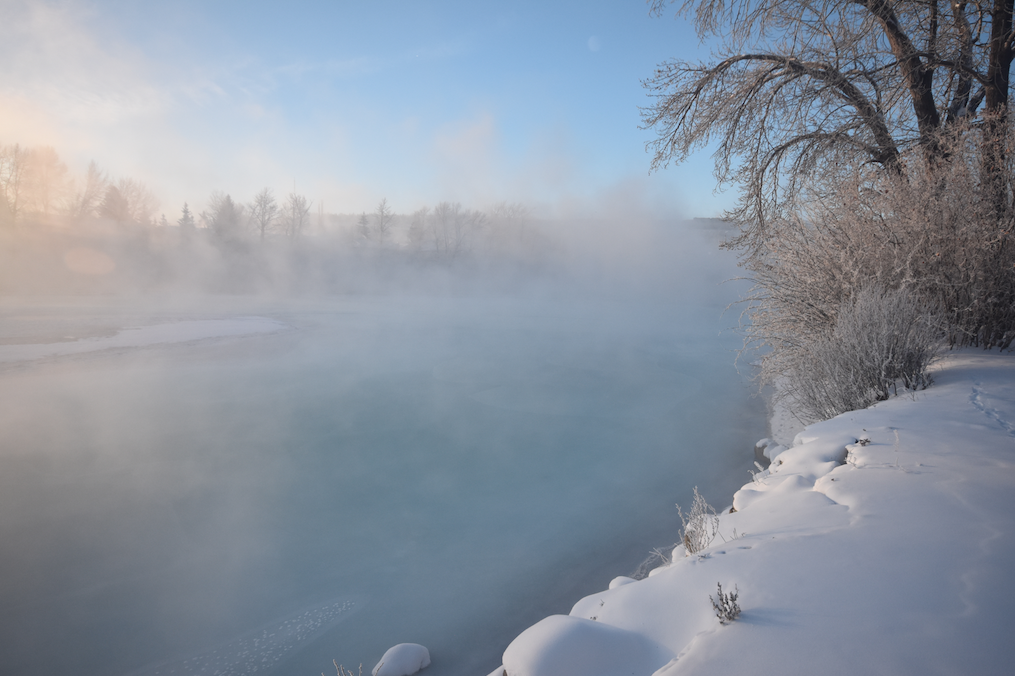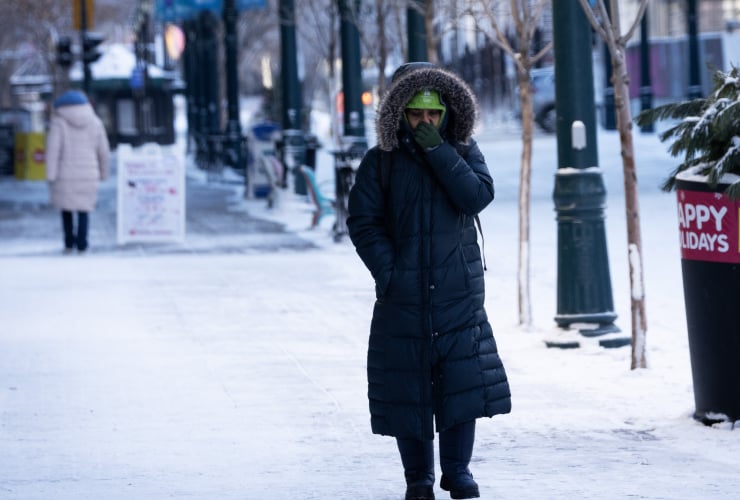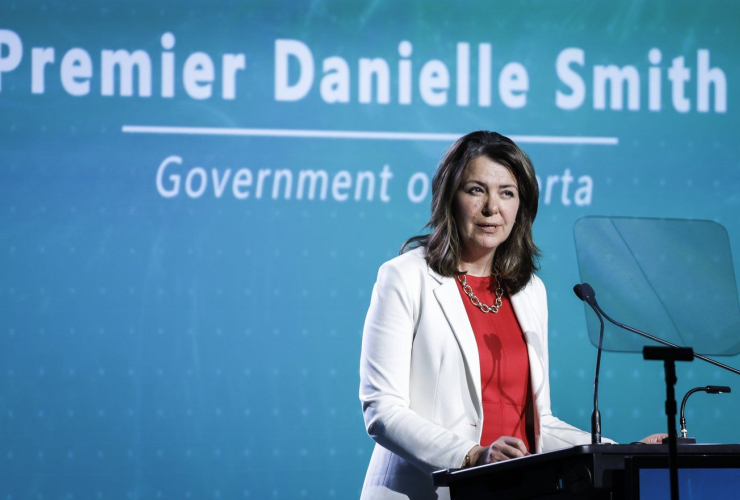A pale sunrise emerged above the tree line along the banks of the Bow River in Calgary last Sunday, illuminating the dense mist swirling above the water. I donned four layers of cotton, fleece, wool and 700-fill down, pulled open our front door, which creaked loudly in protest, and stepped out into the frozen wonderland.
Calgary airport was reporting -36 Celsius and a wind chill of -45. The airlines cancelled hundreds of flights. Calgary Transit buses struggled on streets polished to an icy sheen and the C-Train experienced lengthy delays. Schools and ski resorts were closed. But the streets were calm and quiet as I made my way to the off-leash park with my dog Rio slapping along happily in his winter booties.
The Alberta Motor Association was reporting 48 hour wait times for towing and 24 hours for a boost before changing the online status to, “Wait Time Not Available.” Conservative Member of Parliament, Greg McLean, took the opportunity to stoke electric vehicle range anxiety and imply that they couldn’t be started in such cold weather. My hybrid RAV4 hummed to life without incident, while I didn’t even bother attempting to start the Yaris because its battery rarely has enough life in -30 temperatures to turn over the gasoline engine..
The Alberta government’s emergency warning system blared out an announcement that due to low renewable energy capacity the Alberta Electrical System Operator (AESO) was activating emergency generation. I couldn’t help wonder why Alberta’s public-address system was pointing a finger at renewables.
AESO’s own announcements were more balanced. On January 12th, AESO announced, “High power demand due to extreme cold, two large natural gas generator outages, and very low renewable power on the system have prompted the AESO to declare a Grid Alert.”
Renewable capacity was indeed low, but loss of other generating capacity and low power imports were also contributing to the problem. This didn’t prevent Danielle Smith from announcing on social media, “Right now, wind is generating almost no power. When renewables are unreliable, as they are now, natural gas plants must increase capacity to keep Albertans warm and safe.”
Each time grid alerts were announced during the four-day cold snap, Albertans responded immediately to the call to reduce electricity consumption and the problem was resolved without having to resort to rotating power outages.
AESO rarely needs to implement power outages, but when it’s required they cut off electricity in a controlled manner, allowing power disruptions to be sequentially shared amongst communities for short time periods.
Conservatives are using the cold weather disruptions that we’re all familiar with to attack the clean-energy transition. It’s a great opportunity to create fear that wind will make us unsafe and electric vehicles won’t work in the cold.
Rather than creating narratives that gas is the only safe way to generate electricity in Alberta, the government should be modernizing the electricity system to support more clean electricity. The province needs more renewable energy because it’s far less expensive than zero-emission fossil energy and it allows AESO to significantly reduce greenhouse gas (GHG) emissions by supplementing its power supply with clean sources.
The recent grid alerts were only in effect for a matter of hours and existing energy storage technology is ideal for supplying the grid over periods of four to 12 hours. In the winter, energy storage can be held back for emergency use when the weather forecast is calling for extreme cold, combined with low wind speeds.
Emergency energy storage would only be required if there is a combination of cold weather driving up electricity consumption and low wind speed reducing electricity generation to the grid. In fact, the fourth and final grid alert was cut short when winds picked up in Southern Alberta and sufficient wind energy was generated to accommodate the high demand.
The province also needs a plan to increase electricity import and export capacity with British Columbia and the United States. For example, Iowa generates over 60 per cent of its electricity from wind power while having some of the lowest electricity prices in the country. Iowa is a net exporter of electricity, but it has enough fossil-electricity plants and import capacity to supply consumers on the odd occasion when wind resources are low.
Calgary-based Eavor Technologies has developed a closed-loop geothermal energy system. An Eavor-loop plant is under construction in Germany and it will supply the local community with 64 megawatts (MW) of district heating and 8 MW of electricity. This same solution could provide clean and readily available energy in Alberta while creating another market for drilling-rig operations.
Danielle Smith’s plan to build gas-generated electricity capacity instead of renewable capacity makes no sense. Existing gas-powered generators can already handle record demand when renewable generation is low, as recently demonstrated. Alberta will also be adding over 2.5 gigawatts (GW) of gas-generated capacity this year.
Growing electricity demand may require Alberta to add fossil-based electricity supply and these new gas plants use the highest efficiency combined-cycle technology. However, it is telling that none of these new projects include carbon capture to eliminate most of the GHG emissions.
I enjoyed walking in the cold stillness, listening to my boots crunching in the snow and taking in the beauty of the frozen landscape. It wasn’t as comfortable as the unseasonably warm temperatures that had persisted for weeks, but I was no longer experiencing a sense of loss. The disappearance of winter in Canada should be a concern for everyone.
When cold and blustery weather appears in all its fury, it’s a reminder of what winter was like when we were children. The thermometer regularly dipped below -20C, but this simply meant we had to add an extra layer before heading out for tobogganing, skating or road hockey.
Our children will no longer be used to winters filled with cold air and deep snow. Cold snaps may only be experienced with anxiety. I worry that politicians will seize that anxiety to forward their pro-fossil agenda when it would be far better to just accept the challenges of winter and support solutions that aren’t going to erase the season forever.
Rob Miller is a retired systems engineer, formerly with General Dynamics Canada, who now volunteers with the Calgary Climate Hub and writes on behalf of Eco-Elders for Climate Action, but any opinions expressed in his work are his own.
Imagine if more incentives
Imagine if more incentives were provided to home owners to convert their homes to renewable energy power generators with home batteries to get them through the less optimal times. Less load on the grid & most often will feed the grid. Ideology informs this government not science.
The combination of cold
The combination of cold temperatures and little wind happened in late 2022, as well; it's a common-enough weather pattern across the prairies that we clearly need a continental energy strategy to address it, without methane-burning.
Not my field, but it seems obvious that if BC and Manitoba, both able to run <95% on hydro, were to put in large amounts of renewables to run upon while holding back their hydro - and perhaps upgrading current hydro dams that expect to run 365x24 baseload to be able to deliver twice that much for short periods - and also greatly improve the provincial interties, then BC and Manitoba could sell reliable hydro across four provinces (and to the States) when renewables falter.
I'm not seeing this being proposed by politicians, but I suspect that the engineers are working quietly to put forward such solutions. Or, at least, I hope...
Danielle Smith and her
Danielle Smith and her henchmen in the UCP are totally and unequivocally captured by the fossil-fuel Industry. I am always amazed by her ignorance of how grids work and what Alberta can do. A. Pay for standby baseload electricity. B. Ramp up renewables to get them producing 50% of electricity and use the gas turbines to turn on as the temporary power they were designed for. Uruguay recently achieved 100 % renewables for its electricity grid. It's population is similar to Alberta. Denmark has heavy industry and runs mostly on renewables and Europe's industrial giant Germany does as well. With lack of hydro and hydro high cost, Alberta has the opportunity to be an energy giant! But all thus is wasted by Idealology. Even my local MLA Cyr misleads us with his Idealology.






Comments